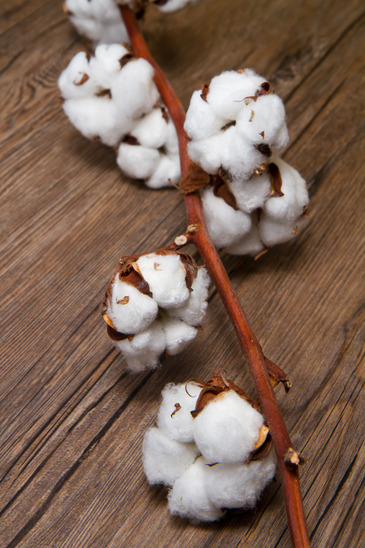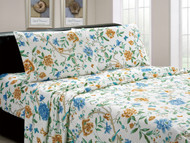Bed Sheet Fabrics: A Guide
1st Sep 2016
There are a number of bedsheet material options available when it comes to shopping for new sheets. For many people, their choice of bed sheet fabric will depend on what material offers them the most comfort.
An important factor determining the quality and durability of bedsheets fabrics is its thread count. This term refers to the number of threads woven together per square inch of fabric. When determining the thread count, both width wise and lengthwise threads are counted.
For instance, a hundred lengthwise threads woven with an equal amount of width wise threads yields a thread count of 200. In most cases, a thread count of 300 or higher signifies a superior quality sheet that is more comfortable and soft to touch.
Bed Sheet Fabric Types
Cotton

Cotton is the most commonly used material to make bedsheets. In this category, combed cotton is that which undergoes a process to extract shorter fibers and discard any impurities present in the material. As a result, the fabric created is soft and smooth.
Another type of bed sheet material is made from Egyptian cotton which is renowned for its strength and quality. Sheets made from this cotton typically come with a high thread count and are considered to be highly luxurious than other types.
In terms of thread count, low thread count cotton is coarse and scratchy and tends to pill easily. In contrast, bed sheets having a higher thread count are made with finer threads, yielding softer sheets. And even though cotton bedsheets may take some time to break in, for the most part, the quality of cotton bedding improves over time, becoming more comfortable and softer with use.
Cotton bedding also holds natural temperature-regulating properties that can help you stay cool in warmer temperatures and snug in cooler temperatures. But perhaps the biggest benefit offered by cotton bedding is the wide variety of designs available for every budget, style and size.
Microfiber

Another type of popularly used bedsheet fabric is microfiber. This fiber is composed of finely woven fibers which are defined by their thickness or denier – a weight unit. A higher denier indicates a materials of higher thickness while a low denier exhibits lower thickness.
Microfiber sheets can be made from synthetic or natural fibers which are lighter, more comfortable, long lasting, breathable and even easier to clean. The result yields a lightweight, luxurious fiber that can be processed to feel like cotton, silk and even suede.
A unique perk offered by this type of fabric is that it is considered an anti-allergy bedding material. This is given the fabric’s water and stain repellence, breathability, better wicking, as well as the ability to repel dust mites. In addition, the fabric is considered environmentally friendly.
It is no wonder that microfiber is now widely considered one of the best fabrics for bedsheets. To choose from a wide variety of microfiber sheets, take a look at Linen Store’s Microfiber Sheet Sets to suit your home’s décor and style profile.
Microfiber bedsheets hold color much better than their cotton counterparts, and like silk, yield hypoallergenic features. However, unlike silk, microfiber bedding is much more budget friendly. If you are looking for solid sheets to add accent to your bedroom, check out Linen Store’s Sheridan Embroidered Sheet Set or to add a floral touch to the bed, take a look at the Brushed Microfiber Blue Floral 4-piece Sheet Set among many others.
Silk

Yet another type of common bedsheet material is silk. Silk bed linens offer lightweight, breathable features that make it a popular choice for bedding material. And while being lightweight, silk is still warm in the winter and cool in the summer.
Plus, like microfiber sheets, silk bedding also possesses naturally hypoallergenic properties that shield it from mold, mildew and dust mites, while its moisture absorbency helps keep sleeping conditions comfortable.
The downside, however, seems to be the cost attached to silk bedding. Being a finer and costlier material, silk bedding usually boasts an expensive price tag and the feel may not be for everyone. At the same time, silk bedding is also comparatively more difficult to care for since it is not recommended to machine wash it, but hand wash or dry clean instead.


